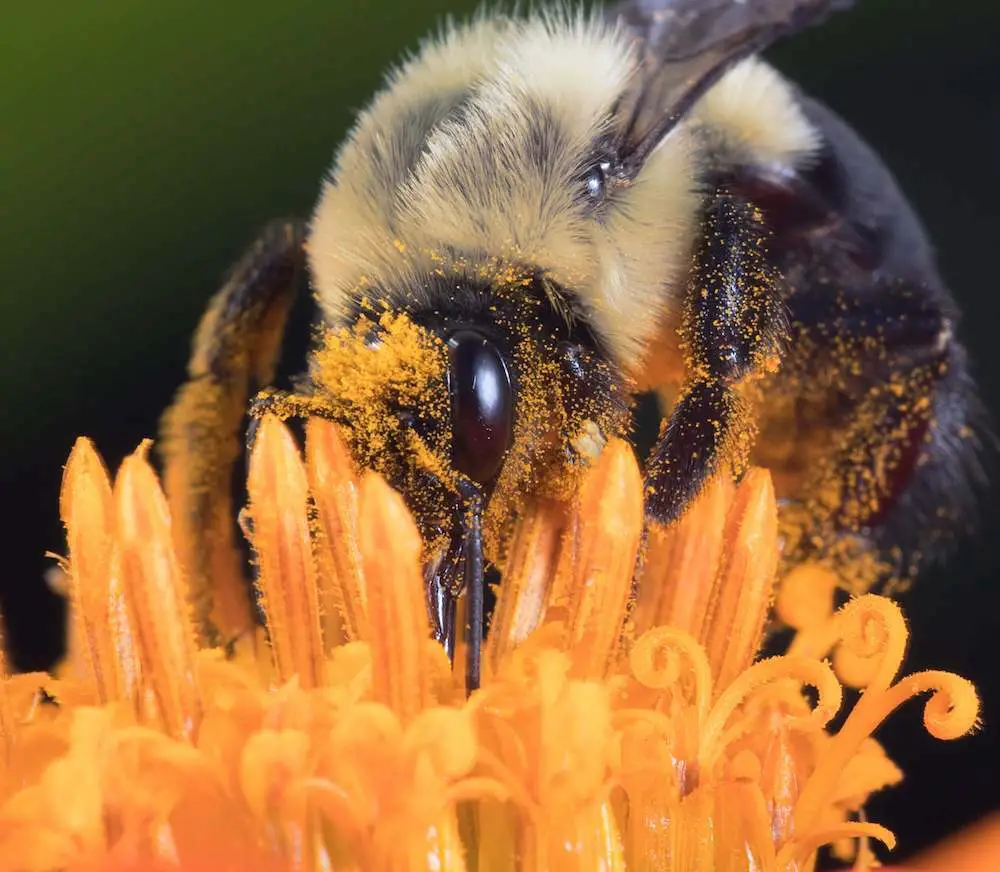Last updated on January 3rd, 2024 at 02:31 pm
Kent has become the recent hotspot for a rare bee sighting. The Fenn Bell Conservation Project team, based in Hoo, discovered the elusive Shrill Carder Bee during their surveys on the Isle of Grain.
These surveys, conducted on behalf of the Bumblebee Conservation Trust, aim to record and identify various bee species. The gathered data plays a crucial role in annual assessments of bumblebee populations and aids ecological research.
Shrill Carder Bee’s Declining Presence
A representative from The Fenn Bell Conservation Project expressed their excitement over the find, noting the Shrill Carder Bee’s declining presence and its limited habitat in select regions of the country.
Click here if you’d prefer to listen to this article. (This link will take you to the kentonline.co.uk website.)
The British and Irish Association of Zoos and Aquariums (BIAZA) also extended their congratulations on this significant discovery.
Characterized by its pale grey-yellow hue, an orange tail, and a distinct black band across its thorax, the Shrill Carder Bee is known for its unique high-pitched buzz. Currently, this bee species is confined to only seven regions in South England and South Wales, making it a rare sight even in these areas.
Bee-Friendly Practices
In related news, Kent County Council’s initiative to promote “bee-friendly” practices among residents recently earned the prestigious Bees’ Needs Champion award. This accolade recognizes the council’s efforts in supporting these endangered insects through thoughtful vegetation management and land conservation.
Interestingly, this isn’t the first time the Shrill Carder Bee has graced Kent with its presence. Just last year, it was spotted on the Swanscombe Peninsula and again it was spotted in 2019 at the enchanted gardens.
Britain’s Rarest Bee Spotted at Enchanted Gardens
The shrill carder bee was spotted previously on April 30th, 2019, during another guided walk by the Bumblebee Trust. This finding underscores the significance of gardens and proper planting for our pollinators.
All Bees Spotted During this Visit:
- Shrill Carder Bee (Bombus sylvarum) Queen: Recognizable by its greyish-green, straw-coloured appearance with a distinct orange tail and a black band across the thorax. It was observed foraging on White-Dead Nettle.
- Common Carder Bee (Bombus pascuorum) Queen: Found on white dead nettle and Solomon’s Seal.
- Red-tailed Bumblebee (Bombus lapidarius) Queen
- Tree Bumblebee (Bombus hypnorum) Queen
- Buff-tailed Bumblebee (Bombus terrestris)
- Hairy Footed Flower Bee (Anthophora plumipes): Both males and females were seen foraging on Honeywort (Cerinthe major).
- Red Mason Bee (Osmia bicornis) female
- Grey-patched Mining Bee (Andrena nitida) females
The Shrill Carder bee, known for its high-pitched buzz, is sadly on the decline. It’s now mostly found in a few locations in south Wales and southern England. However, recent sightings bring hope for its resurgence. This bee is particularly fond of flowers like White Nettle, Black Horehound, Red Clover, and more, many of which are cultivated in our pollinator-friendly nursery.
Shrill Carder Bee Thrives In Diverse Habitats
The Bumblebee Trust highlights that the Shrill Carder bee thrives in diverse habitats, from the dry grasslands of Salisbury Plain to the wet grazing marshes of Somerset. It’s one of the rarest bumblebees, with the queens emerging from hibernation in April and May to build nests. These nests support a colony of workers and a queen, with the queens hibernating from October to April.
Enchanted Gardens, located near Whitstable in Kent, is a paradise for nature enthusiasts. It’s surrounded by beautiful landscapes, including Wraik Hill & Foxes Cross Bottom. The entire area is managed in partnership with the Kent Wildlife Trust, and it’s home to diverse flora and fauna.
Buzzing Gardens Scheme
The Bumblebee Trust is on a mission to make a difference for wild bees. They’re working on various initiatives, from creating ‘Bee-roads’ to supporting landowners in creating pollinator habitats. They’ve also launched the ‘Buzzing Gardens’ scheme, encouraging the planting of pollen and nectar-rich wildflowers.
How To Identify The Shrill Carder Bee
The Shrill Carder Bee is a sight to behold. Its unique greyish-green, straw-like hue differentiates it from most bumblebees. However, its defining features are the muted orange tail and the prominent black band on its thorax. These characteristics make it easily recognizable to those acquainted with various bee types.
Click here to learn more about the shrill carder bee, and for tips on identifying bees, you can visit our Bee ID Guide.





